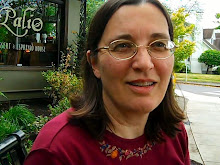I'm listening to a murder mystery on CD by Walter Mosley, titled Fear Itself, set in the brown community of Los Angeles of the 1950s. The POV character is a very literate bookstore owner who grew up in New Iberia, La. His friend and fellow hero is a less-educated man whose point of origin I seem to have missed. The POV character runs across people who have moved to LA from Mississippi, Illinois, Tennesee, as well as pink people.
The reader, Don Cheadle, does a great job of all the dialects. The author mentions what a variety of colors "Negroes" have in the 1950s, and the reader captures those colors in his voice.
The odd thing is that he doesn't do pink people as well. When brown actors or comedians try to imitate pink people, they tend to overemphasize their Rs, and the rhythm is just a little too clipped. It's not that brown people can't speak in a way that's indistinguishable from pink people -- see Condoleeza Rice (no politics, please, I'm just talking about dialects here) -- but in my experience, when I've heard people deliberately trying to "talk white," they didn't quite pull it off -- in the same way that some northern actors have trouble talking "southern" and pinks don't do a convincing job of "talking black" (although since I'm not an aficionado of rap and hiphop, that may have changed without my knowing it).
Maybe the problem is that there is no one "white" dialect, just as there's no one "black" dialect or one "Southern" dialect or one "Northern" dialect. When I went to school in Baton Rouge, La., I could tell what high school kids went to after just a couple of minutes of hearing them talk.
But that's not a hit against this reading of Fear Itself. Readers have plenty of chances to hear various "white" dialects -- from Italian-influenced New Jersey accents to Hispanic-Southern Texas to whatever planet Valley Girls come from. But I've never heard anybody do the brown American voices as well as Cheadle does in this reading.
Subscribe to:
Post Comments (Atom)

No comments:
Post a Comment